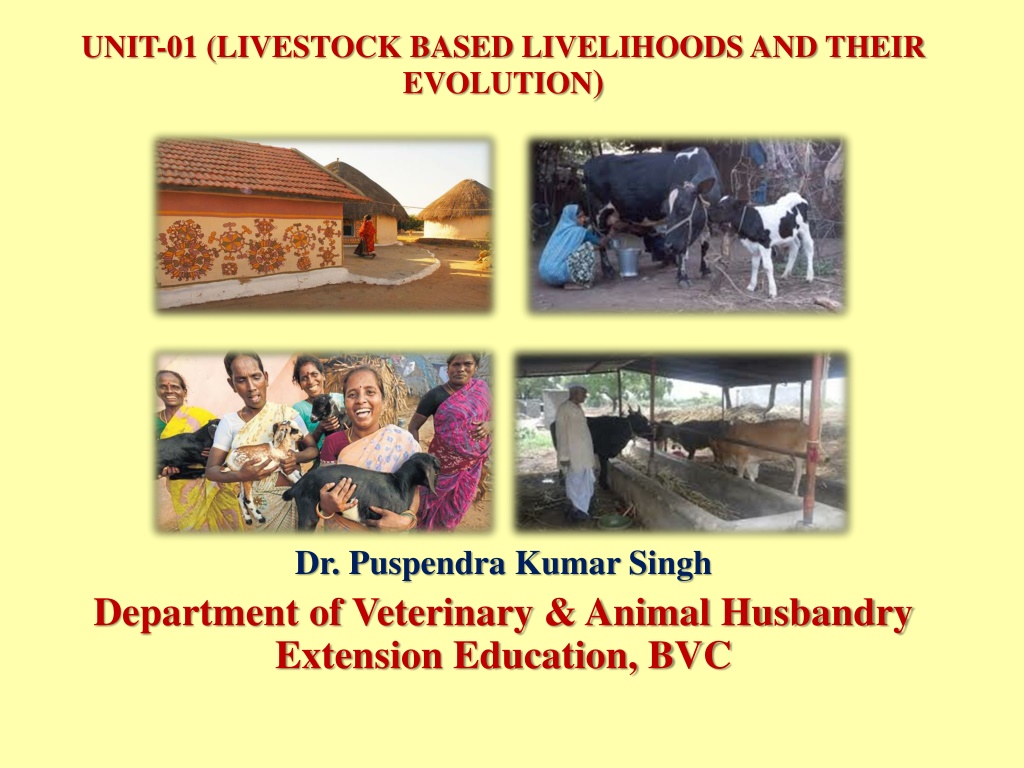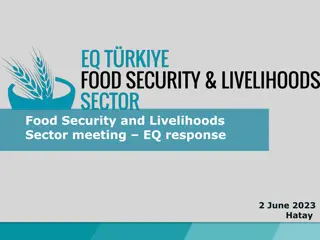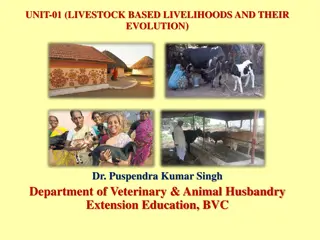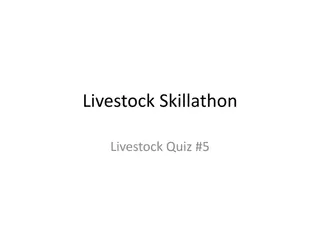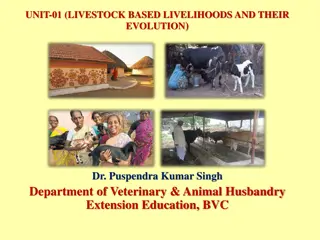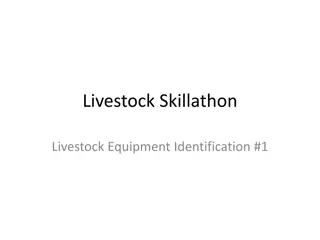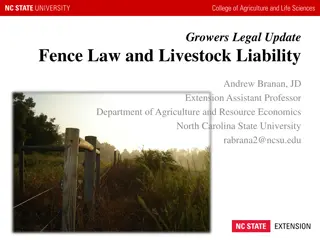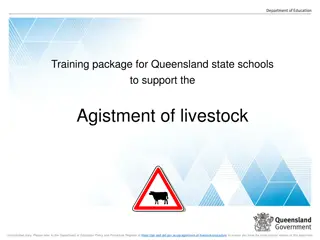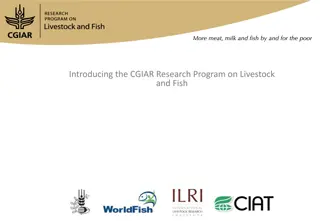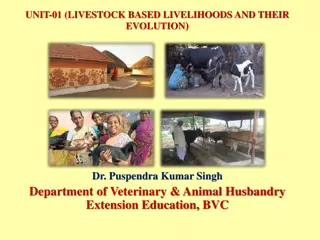Evolution of Livestock-Based Livelihoods in Agriculture
Livestock-based livelihoods, including extensive farming, play a significant role in agriculture. Extensive farming involves minimal inputs of labor, capital, and fertilizers per unit of land. It commonly refers to sheep and cattle farming in low-productivity areas. The system relies on natural soil fertility, terrain, climate, and water availability. This method requires large land areas to be commercially viable due to lower yields per unit of land. Extensive agriculture is typically practiced in sparsely populated regions, away from primary markets.
- Livestock-based livelihoods
- Extensive farming
- Agriculture evolution
- Natural fertility
- Sparsely populated
Download Presentation

Please find below an Image/Link to download the presentation.
The content on the website is provided AS IS for your information and personal use only. It may not be sold, licensed, or shared on other websites without obtaining consent from the author. Download presentation by click this link. If you encounter any issues during the download, it is possible that the publisher has removed the file from their server.
E N D
Presentation Transcript
UNIT-01 (LIVESTOCK BASED LIVELIHOODS AND THEIR EVOLUTION) Dr. Puspendra Kumar Singh Department of Veterinary & Animal Husbandry Extension Education, BVC
Extensive farming is an agricultural production system that uses small inputs of labour, fertilizers, and capital, relative to the land area being farmed.
Extensive Farming Extensive farming most commonly refers to sheep and cattle farming in areas with low agricultural productivity, but can also refer to large-scale growing of wheat, barley and other grain crops. Yields per hectare are very low, but the flat terrain and very large farm sizes mean yields per unit of labour are high. Nomadic herding is an extreme example of extensive farming, where herders move their animals to use feed from occasional rainfalls.
System of crop cultivation using small amounts of labour and capital in relation to area of land being farmed. The crop yield in extensive agriculture depends primarily on the natural fertility of the soil, terrain, climate, and the availability of water. Extensive agriculture produces a lower yield per unit of land, its use commercially requires large quantities of land in order to be profitable.
This demand for land means that extensive agriculture must be carried on where land values are low in relation to labour and capital, which in turn means that extensive agriculture is practiced where population densities are low and thus usually at some distance from primary markets.
Difference between intensive and extensive system of farming
CRITERIA INTENSIVE FARMING EXTENSIVE FARMING Meaning Intensive Farming refers to an agricultural system, wherein there is high level use of labor and capital, in comparison to the land area. Extensive Farming is a farming technique, in which large farms cultivated, with relatively lower inputs, i.e. capital and labor. are being Population It is practiced in densely populated region. It is practiced in moderately populated region. Land holding Small and expensive Large and inexpensive Farmland Near to the market Remotely located Per hectare output Large Small
